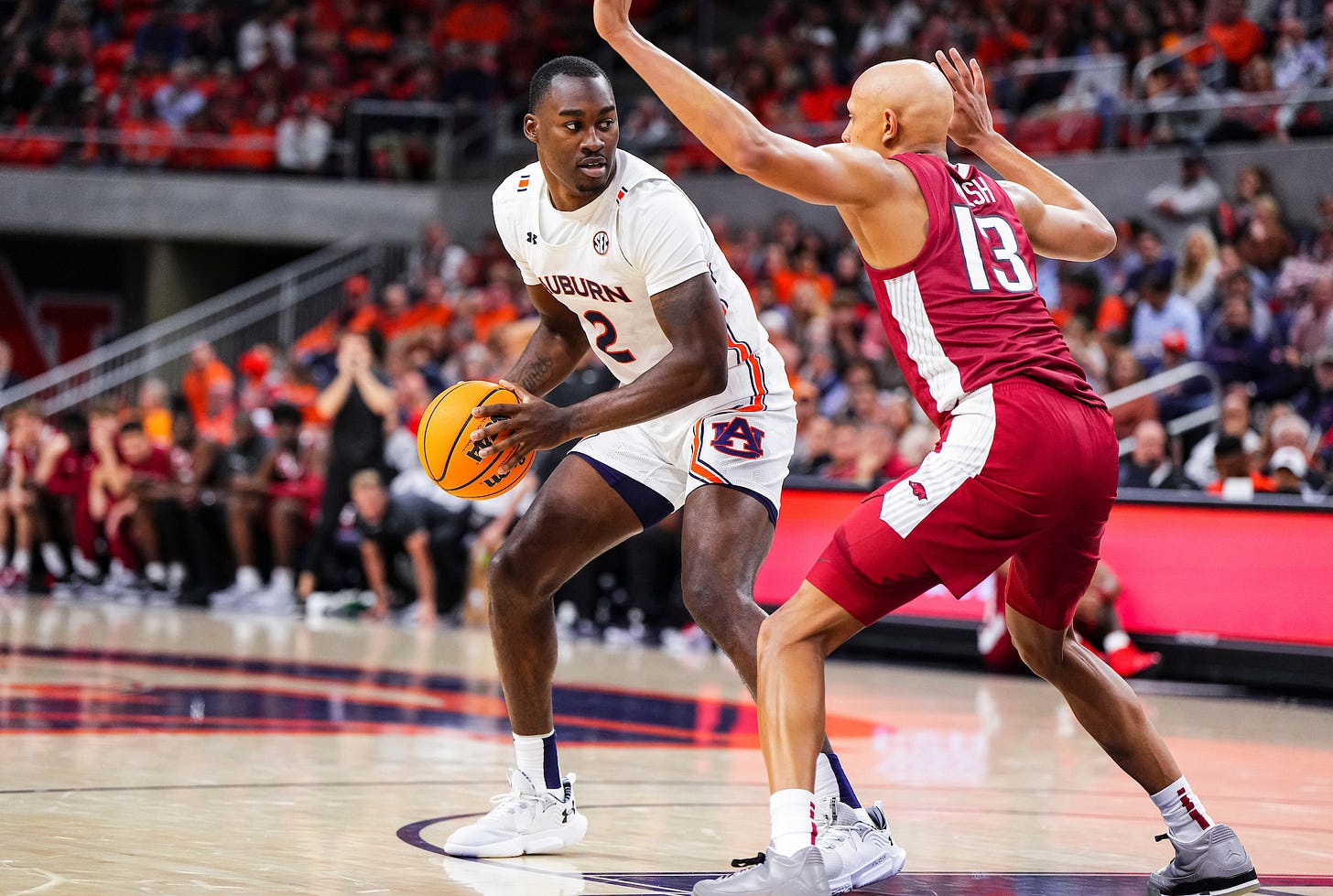The midseason change that made a big difference for Auburn basketball
The Tigers weren't built to run-and-gun like usual. So Bruce Pearl made a decision that changed the course of their season.
PF Jaylin Williams (Zach Bland/Auburn Athletics)
NASHVILLE — The last time Auburn played a basketball game inside Bridgestone Arena, one of the most memorable plays in program history happened.
With 13:29 left to go in the second half of the SEC Tournament title game against Tennessee, Austin Wiley forced a turnover that bounced right into the path of Chuma Okeke. Immediately looking up, Okeke threw an above-the-head pass from inside the arc to Jared Harper, who was a foot inside the line on the other end of the floor.
Harper had a wide-open layup but turned it down to hit Bryce Brown in the corner with a scoop pass. Brown hit the 3-pointer, pushing the Tigers’ lead to 21.
The play turned out to be a defining sequence in Auburn’s 2019 postseason — one that went all the way to the Final Four. Forcing turnovers, running at breakneck speed and quickly taking 3s were all key characteristics of those pace-and-space Tigers.
Four years later, Auburn basketball is back in Nashville. The Tigers’ 2020 tournament run here never happened, as the whole thing was canceled due to the COVID outbreak. Auburn had a self-imposed postseason ban a year later, and the conference was in Tampa for last year’s tournament.
Auburn’s return to the Music City comes with a completely different style of team. Instead of pace-and-space, these Tigers are built to grit-and-grind in the halfcourt.
And Jaylin Williams doesn’t mind that at all.
“I ain’t gonna lie, I get gassed out there sometimes,” the power forward said with a laugh Wednesday afternoon, following Auburn’s shootaround at Bridgestone Arena. “But our plays now are so much better, and we’ve got so many more plays to run that help us out a lot.”
According to KenPom, Auburn is currently ranked No. 131 nationally in average offensive possession length, at 17.3 seconds. As it stands right now, this will be the first season the Tigers haven’t been in the top 75 in offensive pace under Pearl.
Additionally, Auburn’s 3-point attempt rate this season is 35.5%, which is by far the lowest in the Pearl Era. For the Tigers, the goal is quality over quantity, both in shot attempts and possessions in general.
This was a strategic move by Pearl midway through the season. He saw what he was getting in non-conference play from the Tigers’ roster and adapted for the brutal SEC slate.
“In the non-conference, I think sometimes — when we were physically superior to our opponent and deeper — we played faster, we played with greater tempo, we forced tempo,” Pearl said earlier this week. “We turned people over more. I made the decision, once we started league play, that it was not going to be a formula that was going to allow us to keep winning.”
Auburn’s first loss of the season, a defeat at the hands of Memphis in Atlanta, featured the fastest game pace of any contest the Tigers had played all season. (Almost three months later, it’s still the fastest-paced game of the season for Auburn.)
The Tigers also played at a fast pace in sloppy wins over the likes of Texas Southern, Saint Louis and South Florida. Even a lopsided win at Washington featured a high percentage of turnovers. Maintaining that style in conference play didn’t look like a smart strategy.
“At the first of the year, our shooting percentages were pretty down,” shooting guard Zep Jasper said Wednesday. “All of our numbers were just bad. We really had to figure out something that could work for us. … I feel like halfcourt offense really changed our games and really changed the dynamic of our team.”


